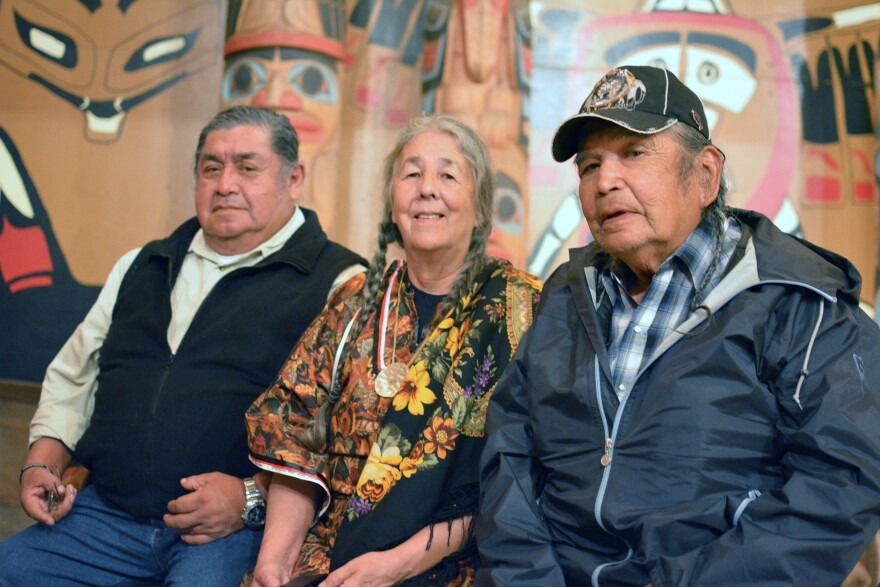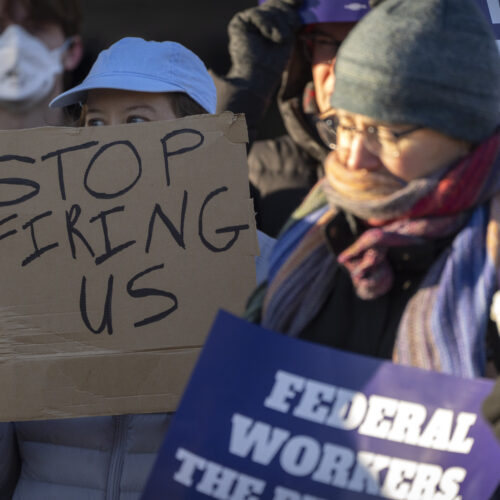
Judges Dismiss Long-Running Court Case Over Sacred Site In Oregon
Read
A federal appeals court dismissed a lawsuit from Yakama Nation and Grand Ronde tribal leaders, who claimed a 2008 highway expansion destroyed a sacred site near Mount Hood.
The United States Court of Appeals for the Ninth Circuit on Wednesday sided with the federal government, saying the case of the tribal leaders was moot.
In 2008, a safety project added a center turn lane to a mile-long stretch of U.S. Highway 26 that had an increase in traffic accidents and fatalities. The Oregon Department of Transportation owns the highway right-of-way easement that tribal leaders said also encompassed a small sacred area.
Wilbur Slockish, hereditary chief of the Klickitat Band of the Yakama Nation; Johnny Jackson, hereditary chief of the Cascade Band of the Yakama Nation; and Carol Logan, a Confederated Tribes of the Grand Ronde elder, filed the lawsuit. Jackson died in 2020 after he was hospitalized due to Covid-19.
The tribal leaders asked the federal government to return much of the site to its original state before highway construction bulldozed the area, called Ana Kwna Nchi Nchi Patat, or the Place of Big Big Trees.
The tribal leaders said the destruction of the sacred site violated religious, environmental and land preservation acts.
In 2012, the Oregon Department of Transportation had been dismissed from the long-running lawsuit based on the 11th Amendment, which protects states from being sued by people living in a different state. Slockish and Jackson are from Washington.
“The remaining defendants are federal agencies that cannot order the outright removal of the challenged highway expansion,” according to the dismissal.
In 2008, the highway safety expansion cut down old growth Douglas fir trees, bulldozed a burial ground and stone altar, and covered medicinal plants with an earthen berm, according to the complaint.
The tribal leaders wanted the federal government to replace vegetation, remove a guard rail, and reconstruct the stone altar, called a rock pile by the federal government. Leaders also asked to remove an earthen berm, called an embankment by the federal government, that covers the site.
The requests to repair the site by the tribal leaders would change parts of the safety project the Oregon Department of Transportation designed, according to the dismissal.
“Because ODOT has been dismissed from this suit, none of the defendants has authority to make the changes sought by plaintiffs,” according to the dismissal.
All of the requests by the tribal leaders would make the highway less safe, according to the dismissal.
According to earlier court documents, the tribes have used the site since time immemorial for religious ceremonies that cannot take place anywhere else. Tribes established villages, campsites, and burial grounds for people who died along the well-established regional trails, according to the documents.
In a video attorneys posted about the case, Slockish said, “To me it’s like them going into the Catholic Church or the Protestant Church and cutting their altar or moving it in a different place and saying it’s of no significance.”
Attorneys for the tribal leaders said the highway safety project could have been expanded to also protect the site.
In court documents, the federal government said the tribal members never formally proposed any alternative solutions when the project was proposed.
In oral arguments Nov. 16, attorneys for the federal government said by the time the tribal leaders filed the lawsuit in October 2008, the site had already been destroyed.
In addition, Joan Pepin, an attorney for the federal government, said, no one knows what happened to the rocks that made up the stone altar. Therefore, she said, it cannot be restored.
Tribal leaders said the federal government didn’t listen to their concerns prior to the filing the lawsuit.
Further, according to opening briefs from attorneys representing the tribal leaders, the federal government changed highway expansion plans decades earlier when officials learned about the site in the 1980s. Highway officials didn’t take those same considerations in 2008, attorneys for the tribal leaders said.
In a video, Slockish said the tribes have always taken care of sacred land and all burial sites.
“That is what we were charged with through our Creator – to take care of them, to make sure that they weren’t disturbed,” Slockish said.
In a response on Twitter, Luke Goodrich, senior counsel for Becket, the firm representing the tribal leaders, said the Ninth Circuit decision, made days before Native American Heritage Day, demonstrates the federal government doesn’t have to be held responsible for destroying sacred sites.
“The government didn’t care that laying waste to an ancient stone altar, bulldozing indigenous burial grounds, and destroying the surrounding nature that people use to gather food and medicine would impede their religious worship, a clear violation of the Religious Freedom Restoration Act,” Goodrich tweeted.
The firm is reviewing its options to appeal the decision, Goodrich tweeted.
Related Stories:

In the Northwest, some tribal grants frozen amid federal worker firings
Demonstrators rally in support of federal workers outside of the Department of Health and Human Services in Washington. (Credit: Mark Schiefelbein / AP) Listen (Runtime 1:22) Read The Trump administration

This bill could give Washington tribes, communities more say in wind, solar development
A new bill making its way through the Washington Legislature would require county and tribal approval for new wind and solar projects that go through the state’s Energy Facility Site

Feds update Columbia River Treaty flood risk management
Grand Coulee Dam in eastern Washington. Changes to the Columbia River Treaty could mean more flood risk management is controlled at the dam. (Credit: Shutterbug Fotos / Flickr Creative Commons)















